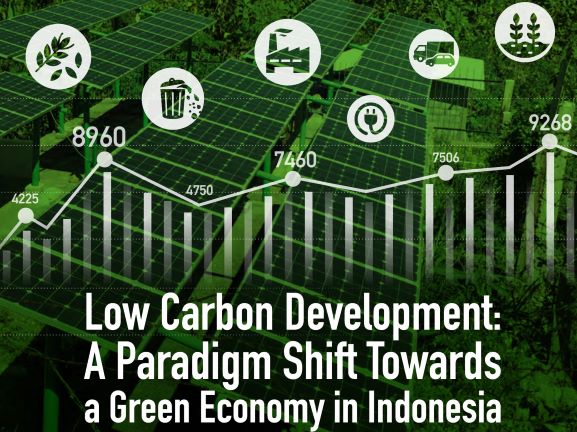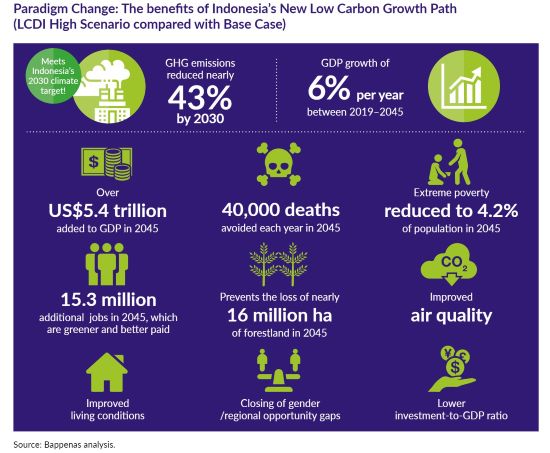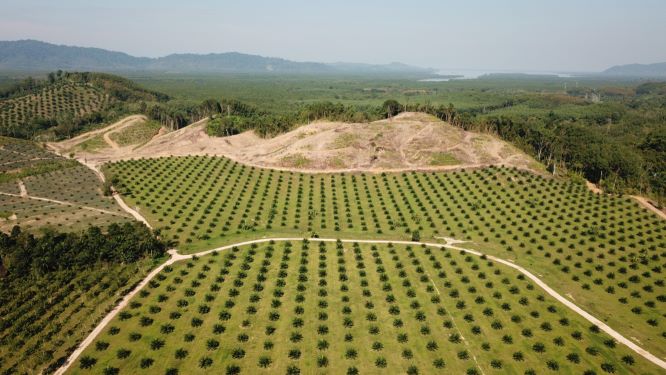4th largest Emitter Indonesia Announces New Low-Carbon Development Plan

Indonesia has surprised the world with socioeconomic performance. However,its impressive economic development came at the cost of burning its rainforests, palm oil plantations and illegal timbering. Thankfully, it has devised a Low Carbon Development Initiative which charts out a path for less carbon-intensive, more efficient energy systems that deliver an average of 6 percent GDP growth per year until 2045—even more economic growth than the business-as-usual path. The plan includes continued gains in employment generation, increased incomes and poverty reduction. The strategy would cut the country’s greenhouse gas emissions by an impressive 43 % by 2030, exceeding Indonesia’s international climate target.
The government is now busy with feeding its findings from this new report directly into its next five-year development plan, which will cover 2020–2024. This will help Indonesia to overturn the false choice between economic growth and sustainability, and show countries around the world that it is now entirely possible and profitable to tackle climate change economy-wide.
Read: Climate Economy Study predicts $26 trillion benefits from greener path
Why?
The Indonesian government wants the gains from low carbon development to consistently and increasingly yield more over the next decades, starting immediately. In 2045, Indonesia will have added $5.4 trillion to GDP, relative to business as usual.
Some of those gains in 2045 stem from: 15.3 million additional and good quality jobs, which are greener and better paid; extreme poverty halving again, to 4.2 percent of the population relative to 2018; about 40,000 lives saved every year from reduced air and water pollution; and the preservation of nearly 16 million hectares of forests that would otherwise have been cut down—an area of land larger than the size of England. Additionally, air quality and living conditions will have vastly improved, and the opportunity gap between women and men, and between provinces, will have diminished.
This way Future Indonesia will offer better value to investors than an Indonesia that grows through extraction and fossil fuel use. With low-carbon development, each dollar added to the country’s GDP requires less up-front investment.

Features
A wholesale economic shift will require a concerted policy effort. The Indonesian govt has set strategic policies with clear incentives and signals for the private sector:
- Moving away from coal and increasing renewable energy’s share of the power sector to at least 30 percent in 2045. Renewable energy is now cheaper than coal in Indonesia when considering the costs of air pollution;
- Reducing energy intensity (units of energy per unit of GDP) by 3.5 percent in 2030, and by 4.5 percent afterward;
- Fully enforcing moratoriums on forests, palm oil, mining, and peatland development;
- More than tripling targets for reforestation, reaching more than 1 million hectares (2.5 million acres) per year by 2024;
- Meeting existing national and international targets for water, fisheries and biodiversity conservation; and
- Increasing land productivity by 4 percent each year, enabling Indonesia’s farmers to grow more food for more people using fewer resources.
Path less followed
Indonesia which is the world’s 15th-largest economy and its fourth-largest greenhouse gas emitter has taken its first step to tackle the country’s outsized impact on the global climate by transitioning now to a low-carbon economy. Perhaps, Indonesia’s overtures will be a good example for the rest of the world.
We do notice that Indonesia’s new development plan is ambitious, yes, but it is also necessary, achievable and economically prudent. If Indonesia – an emerging economy with an imperative to improve its people’s standard of living – can pull off low-carbon development, then other countries can, follow suit too.








